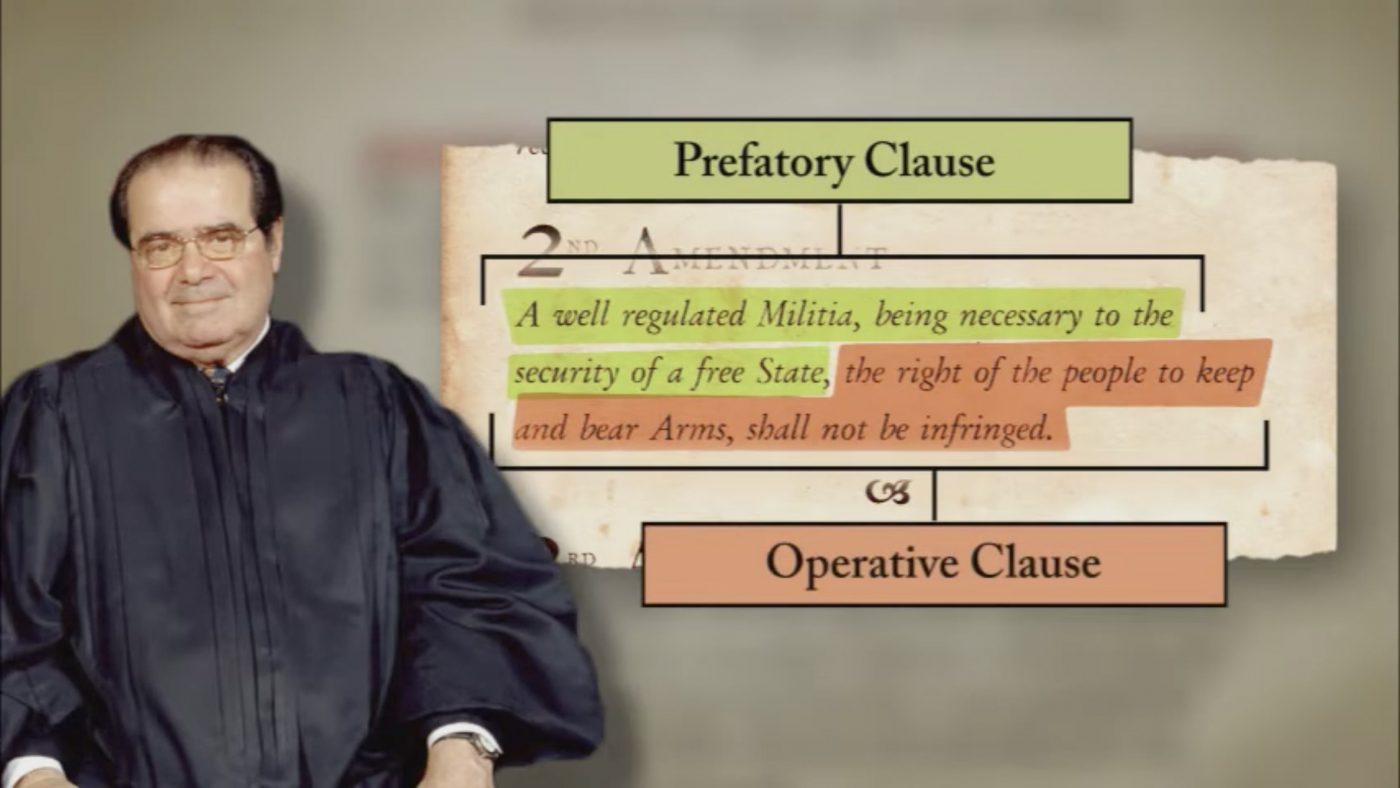In honor of Constitution Day, September 17, Annenberg Classroom has released a documentary on the Second Amendment’s “right to bear arms.” The film, “Second Amendment: D.C. v. Heller and McDonald v. Chicago,” is the latest in a series of award-winning films about the U.S. Constitution.
The film examines the history of guns and gun ownership in our society from the Revolutionary War to modern times, and the complicated debate over what the founders intended when they wrote the Second Amendment. Does it provide a right of individuals to keep and bear arms? Or is it a right that can be exercised only through militia organizations like the National Guard?
The film is one of the free, high-quality, nonpartisan resources offered to educators, students, and families by Annenberg Classroom and the Civics Renewal Network, projects of the Leonore Annenberg Institute for Civics at the Annenberg Public Policy Center of the University of Pennsylvania.
The new film is being released in advance of arguments this fall on the most significant Second Amendment case to come before the Supreme Court in more than a decade. New York State Rifle & Pistol Association v. Corlett focuses on a New York state law that restricts an individual’s right to carry a concealed handgun in public.
[Watch the film here.]
“Guns have been part of American life since the beginning, since the settlers came and landed at Plymouth Rock,” David Cruz of the University of Southern California Gould School of Law says in the film. Before the American Revolution, firearms were integral to American society for purely practical, quotidian reasons – namely, the need to hunt and the need to protect oneself from external threats. When American colonists’ militias succeeded against British rule, armed militias and their guns were “romanticized, and romanticized in part because the Revolution starts with the militia,” says Robert Cottrol of George Washington University Law School. The Second Amendment to the freshly minted Constitution thus stipulated: “A well regulated Militia, being necessary to the security of a free State, the right of the people to keep and bear Arms, shall not be infringed.”
Although the amendment’s language is hotly debated today, scholars generally agree on one thing: The Second Amendment is not well written. “You can make a good argument either way about whether people anticipated this simply as a right that applied to those who could serve in the militia or was a kind of individual right,” said political scientist Rogers Smith of the University of Pennsylvania.

The conflict in interpretation came to a head in 2008 in the Supreme Court case D.C. v. Heller. A security officer named Richard Heller argued that he had the right to use his registered gun to protect his home from intruders, which was illegal in Washington, D.C. A 5-4 majority of the Court ruled in favor of Heller and the individual’s right to own a gun. In the majority opinion, Justice Antonin Scalia argued that the Second Amendment’s “operative clause” that the “right of the people to keep and bear arms, shall not be infringed” guaranteed those in the general community, not just in the militia, the right to own and use guns for the purpose of home defense. A 5-4 Supreme Court decision in McDonald v. Chicago in 2010 extended that right to the states, ruling that the Second Amendment right to bear arms is a fundamental right that states must protect.
[Watch the film here.]
Annenberg Classroom provides resources for middle and high school students and features a library of more than 60 videos, including conversations with Supreme Court justices, interactive games, a guide to the Constitution, and other resources. Among its award-winning films in The Constitution Project series are:
- “Freedom of Assembly: National Socialist Party v. Skokie”
- “The 19th Amendment: A Woman’s Right to Vote”
- “Freedom of the Press: New York Times v. United States”
- “Yick Wo and the Equal Protection Clause”
- “Korematsu and Civil Liberties”
The Civics Renewal Network, a consortium of more than 35 nonpartisan, nonprofit organizations dedicated to increasing the quality of civics education, offers a curated collection of resources for Constitution Day. CRN’s Constitution Day Toolkit provides a variety of activities and lessons for a Constitution Day celebration at school or at home. Learn more about CRN’s partners.


